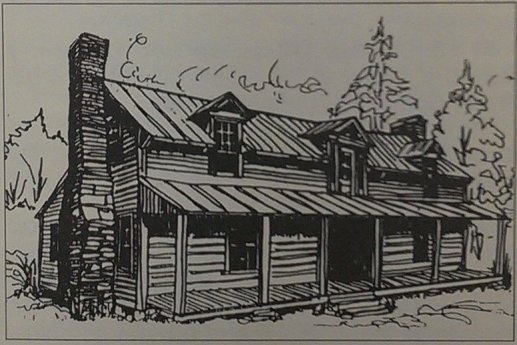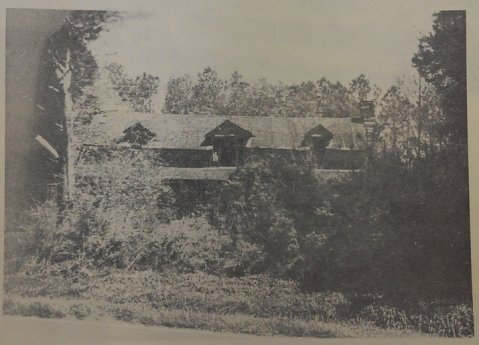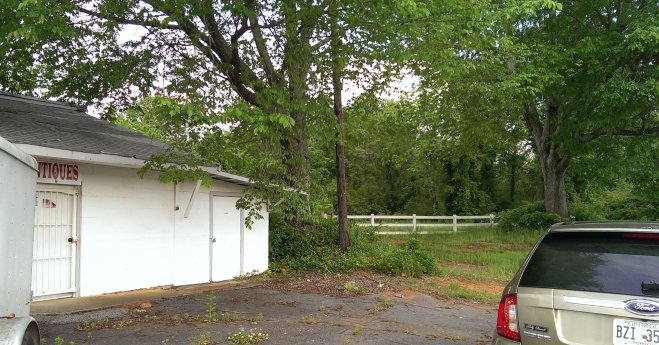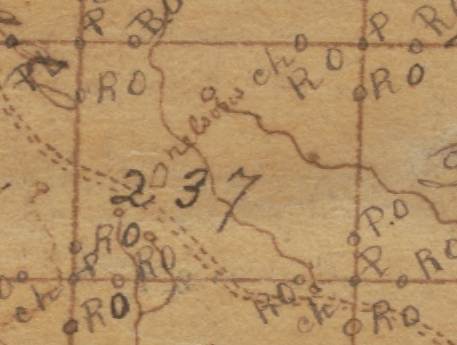


This is the home site as it appeared in May 2013. The GPS had taken us to the Antiques sign.
According to Ned Trippe, the house had been located behind the picket fence.
Undoubtedly, the two oak trees are the ones in the picture above.

This is the Survey for the 1832 Land Lottery of Cherokee lands. James Simmons owned the property on Lot 237, District 12, Section 2. Each plot was 160 acres, 1/2 mile square. In 1832 Gen. Charles Haney Nelson's cabin and name is shown above right of the "2". It appears that the lottery was won by Henry Allegood from Laurens County. James Simmons purchased the land and property, likely from Allegood, following the lottery. More research to follow.
Note Old Federal Road shown as dotted line.